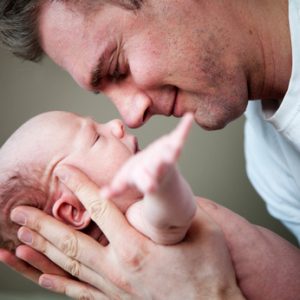Dear Drake: whether you decide that Natural Insemination (NI) or Artificial Insemination (AI) is the…
read more » Imagine starting a family using a sperm donor from a reputable sperm bank. You took the time to flip through athletics, eye color, bone structure and education of donors. Now imagine getting a phone call after the child was born and being asked to go and check if your baby is still alive. It sounds completely absurd and unreal, but it happened to Anne Morriss. Only afterward would the man, phoning with results from the state’s newborn screening test, explain that her son had tested positive for a rare and potentially fatal genetic disorder that prevented him from converting certain fats into energy.
Imagine starting a family using a sperm donor from a reputable sperm bank. You took the time to flip through athletics, eye color, bone structure and education of donors. Now imagine getting a phone call after the child was born and being asked to go and check if your baby is still alive. It sounds completely absurd and unreal, but it happened to Anne Morriss. Only afterward would the man, phoning with results from the state’s newborn screening test, explain that her son had tested positive for a rare and potentially fatal genetic disorder that prevented him from converting certain fats into energy.
Now Morriss has cofounded a company aimed at reducing the odds of having an unhealthy child when using a sperm donor. Named GenePeeks, it will test a woman’s DNA and the genes of potential donors to produce a personalized list that strikes out donors who may be a bad match for about 600 genetic childhood diseases. The test, costing about $2,000, will be offered starting in December to customers of a New York sperm bank.
Although virtually every person probably harbors at least one flawed copy of a gene that could cause a disease, such illnesses are recessive traits, meaning they will not develop unless a child inherits two flawed copies of a gene, one from each parent. That means risk factors can lurk in perfectly healthy people’s DNA for generations — until someone happens to pick a reproductive partner with the same mutation. Even then, they would have only a one-in-four chance of having an affected child.
Technology is already being used in an attempt to lower those odds even more. Prospective parents can be tested to see if they or their partners — or sperm donors — carry risk factors for specific panels of diseases, often chosen based on their ethnicity. Sperm banks often test for the most common genetic diseases.
A mutual friend introduced Morriss, a former consultant, to Lee Silver, a Princeton University biologist who had thought up a novel way to give prospective parents better guidance about potential offspring. Together they founded GenePeeks. Silver’s technique uses computer modeling to mimic what happens when people reproduce: Half of a woman’s DNA combines with half of her partner’s. Silver argues that by looking not just at the genes the parents carry, but at the possible combinations, it will be possible to identify pairings that are likely to result in illness.
The company is starting with a conservative approach; it will simply expand on the kind of screening that is already done, looking more exhaustively for recessive genetic diseases. Morriss and Silver hope to eventually test the risk for more complex diseases, depending on the state of scientific understanding. The technology skirts some of the most thorny issues that emerge when it comes to DNA analysis and reproductive genetics. Because no one receives any genetic information back, the company will not have to wrestle with reporting disease risks back to the women or sperm donors.
Originally found here.






